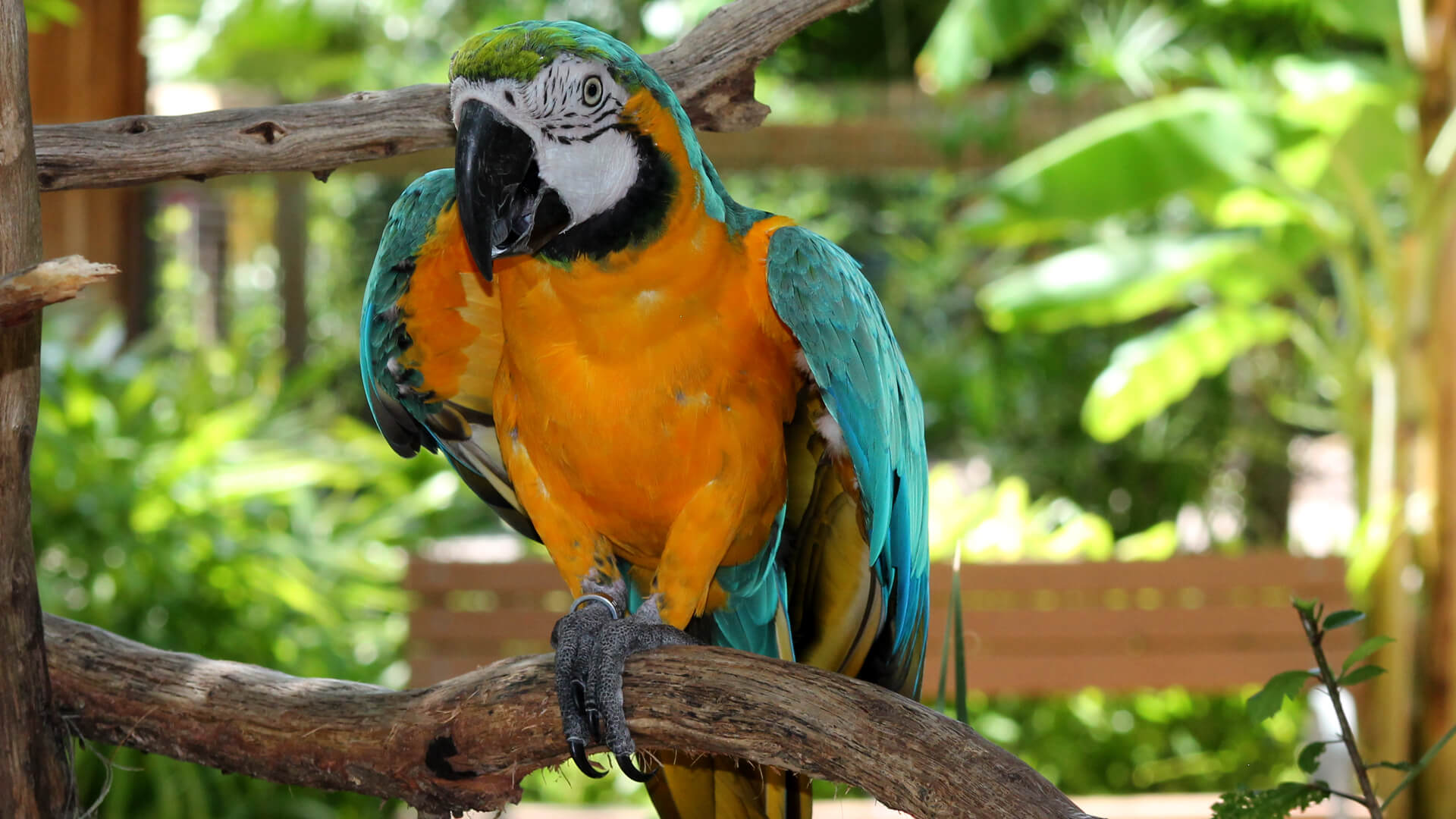
These South American birds are highly intelligent and congregate in massive flocks in the wild. They are very social, colorful animals with a penchant for loud vocalizations.
These large parrots have beautiful ultramarine plumage along their backs and bright yellow feathers on their undersides. They are gregarious birds who are rarely seen outside of large groups or in pairs. Often found eating and socializing in rainforest canopies, they are common throughout most of tropical South America and up into parts of Panama. Unfortunately, populations in certain areas are threatened or endangered. These macaws were once plentiful on the island of Trinidad, but are no longer be found there. This phenomenon is known as local extinction. You can help protect these beautiful macaws in your own home by using recycled paper products and making sure to recycle aluminum cans, since both of these resources come from the Amazon and can contribute to deforestation.

Here at the Zoo, we have Diego, our blue-and-gold macaw. Most days, he can be seen on exhibit with our green-winged macaws in the Spectrum News 13 Children's Garden. Diego loves interacting with our guests!

Courtney
Macaws have more taste buds on their tongues than any other type of bird!
eastern Panama and South America
Tropical forests, swamps, savannas
Height: 76–86 cm, Wingspan: 104–115 cm | 995–1380 g
Seeds, nuts, fruits, vegetation
Harpy eagles, hawk eagles, orange-crested falcons, humans
Strong and sharp bills and claws, flight, predator mimicry
1–2 eggs per clutch
Least Concern
30–35 years in the wild, and up to 50 years in human care
